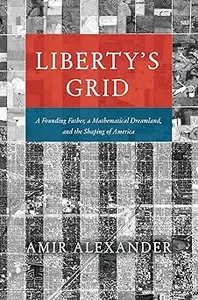Liberty’s Grid A Founding Father, a Mathematical Dreamland, and the Shaping of America

Free Download Amir Alexander, "Liberty’s Grid: A Founding Father, a Mathematical Dreamland, and the Shaping of America"
English | ISBN: 0226820726 | 2024 | 304 pages | PDF | 5 MB
The surprising history behind a ubiquitous facet of the United States: the gridded landscape.
Seen from an airplane, much of the United States appears to be a gridded land of startling uniformity. Perpendicular streets and rectangular fields, all precisely measured and perfectly aligned, turn both urban and rural America into a checkerboard landscape that stretches from horizon to horizon. In evidence throughout the country, but especially the West, the pattern is a hallmark of American life. One might consider it an administrative convenience-an easy way to divide land and lay down streets-but it is not. The colossal grid carved into the North American continent, argues historian and writer Amir Alexander, is a plan redolent with philosophical and political meaning.
In 1784 Thomas Jefferson presented Congress with an audacious scheme to reshape the territory of the young United States. All western lands, he proposed, would be inscribed with a single rectilinear grid, transforming the natural landscape into a mathematical one. Following Isaac Newton and John Locke, he viewed mathematical space as a blank slate on which anything is possible and where new Americans, acting freely, could find liberty. And if the real America, with its diverse landscapes and rich human history, did not match his vision, then it must be made to match it.
From the halls of Congress to the open prairies, and from the fight against George III to the Trail of Tears,
Read more

